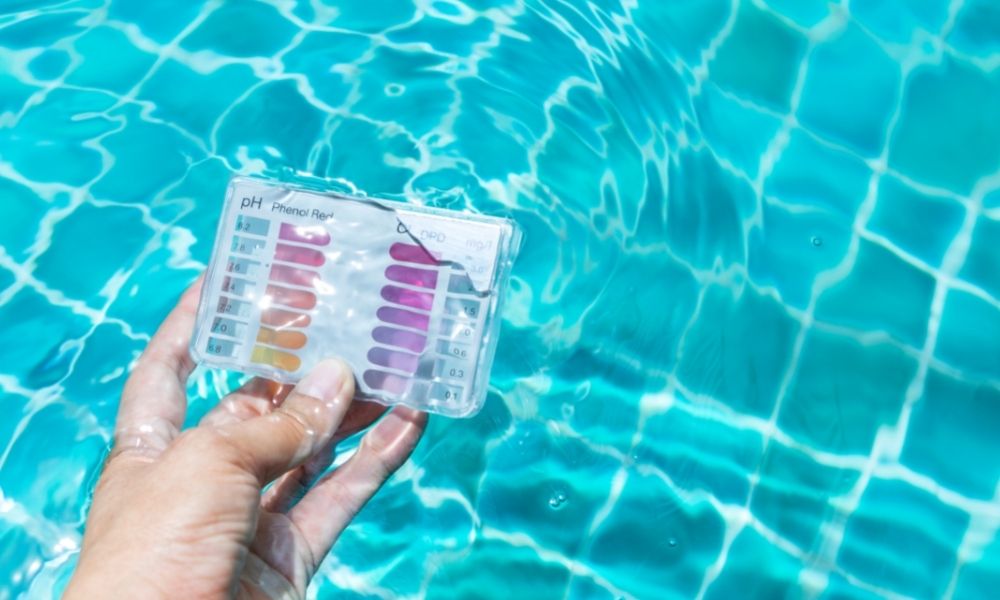
How to Test Pool Water Without a Kit
Regularly testing your pool pH levels can help you maintain your pool safe to swim and your pump operating correctly. If you want to know how to test pool water without a kit, we invite you to keep reading this blog.
Avoid the risks of using your pool by keeping your pool maintenance on top. Simple chemistry will help you have safe and healthy aquatic fun with your loved ones.
The guide below will provide you with easy steps on how to test pool water without a kit.
How To Test Pool Water Without a Kit
There are many advanced test kits in the market, but we will share some steps to test your pool without a kit if you don’t own one.
You need to test your pool water constantly to prevent any algae and bacteria growth. You should guarantee your pool pH are at the proper levels to enjoy a clean, comfortable, safe pool and prevent its longevity.
Learn how to test pool water without a kit following these DIY steps.
DIY Water Testing Kit: Get the Right Materials
If you want to create your pool kit with things you can find at home, we will guide you through how to do it.
Testing your pool water without a kit is easier than you think. All you need to get is distilled water and red cabbage. These two ingredients will give you quick, accurate results for your household needs.

1. Prepare the Indicators
Slice your red cabbage into pieces and put it into a clear bowl. Boil one or two cups of distilled water in a pot and pour it into the bowl until the cabbage is submerged.
Stir with a ladle or a big spoon and set it aside for 30 min. Separate the cabbage from the liquid using a strainer and watch how the water turns into a reddish-purple color.
2. Time to Test the Water
Get a small sample of your pool water into a clear container. Then, put a few drops of the red cabbage juice and wait to see if the color starts to change or remains the same.
Your swimming pool water will change color and tell you how your pH levels are.
If the water turns into a reddish-pink color, your pool water is acidic. On the other hand, if it turns yellow or greenish-blue, it means the water is alkaline.
No color means your pool water is neutral.
3. Use a Color Chart to Determine the pH of Your Pool Water
All you have to do is compare the color of the water to the chart to test the pH levels of your pool water.
The pH scale has numbers ranging from 0 to 14. The pH neutral level of pure water is 7. Numbers less than seven indicate an acidic level, while numbers higher than seven indicate a basic or alkaline level.

Why Is It Important to Test My Pool Water?
There are several reasons why you should test your pool water regularly. Among them, low pH levels can damage your pool metal or even irritate your skin.
Low and high pH levels can affect your health and your pool’s facade. That is why you should undoubtedly test your pool water every week or so.
The process of getting your pool water tested can be complex if you are new to it. But having balanced pH levels will keep your pool corrosion-free, making it safe for all to enjoy.
When and How to Do It?

Many pool owners don’t know that you should get your pool tested after events such as rainstorms, more extensive uses of the pool, color changes, or cloudiness issues.
Regular water testing is vital for keeping your chlorine, pH, and alkalinity levels in check. In addition, you need to test for cyanuric acid, iron, calcium, and other phosphates to maintain the safeness of the pool.
Experts recommend the following schedule for pool water testing:
- pH levels: 2-3 times per week
- Chlorine: 2-3 times per week
- Alkalinity: One time per week
- Cyanuric acid: Once per month
- Acidity: Every time pH levels need some adjustment
We just talked about how to DIY your pool testing kit, but if you’d like to use another method, the following steps will guide you through the process.
Using pH Testing Strips to Test Water

Testing strips are an easy way to get your pool water tested. They are cheap and have all you need to test the water with accuracy with just one strip. Basic testing strips usually test alkalinity, chlorine, and pH levels. But there are also strips for iron, salt, copper, and others as well.
All you got to do is collect a water sample and drip a dry strip into the water quickly. Wait a few seconds and then match the colors with the readings in the back of the bottle.
Using a Liquid Test Kit

For regular pool maintenance, you must test your pool water regularly. As mention above, you can use testing strips to do this. On the other hand, you can also use a liquid testing kit to test your water.
If you plan to get a liquid testing kit, ensure it includes orthotolidine (OTO) and phenol red to test chlorine and pH levels.
As for the testing strips, using a liquid testing kit is really easy. All you have to do is collect a water sample and add a few drops of the solutions included in the kit.
Match the colors with the included color chart, and that’s it—easy-peasy pool water testing.
Professional Pool Water Testing
Now you know how to test pool water without a kit; it’s time to do it yourself! However, if you are interested in professional pool maintenance, contact us to set an appointment with our experts. We will gladly assist you.




